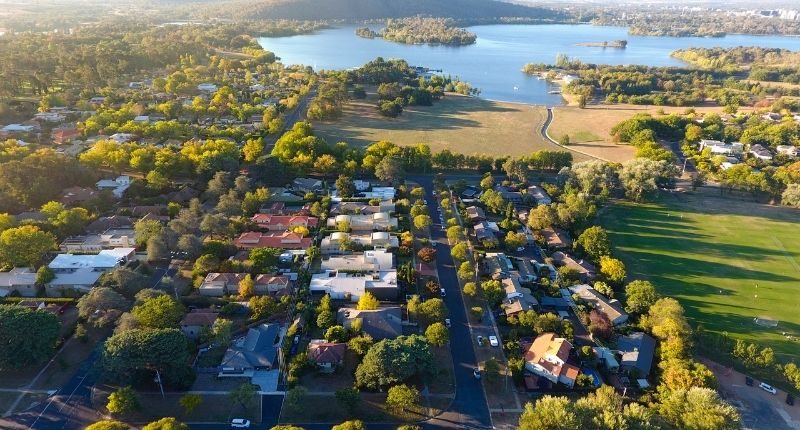- Tightening credit availability expected to make an impact into the next year
- Late 2023 is expected to represent the bottom of the cycle
- Units expected to decline less nationally, thanks to more workers moving to hybrid working arrangements
Although there was a sharp rise in the national median total dwelling price since the pandemic – in fact, the Australian residential property market peaked at over $10 trillion earlier this year – dwelling prices have declined nationally, with quarterly price growth in June 2022.
The housing market slowdown has so far been widespread, but with significant variations across geographies.
Sydney is unsurprisingly the most indebted and least affordable capital city, with this market likely to be the most susceptible to rising borrowing costs. Therefore, it is to experience the most substantial decline.
SQM Research shows asking prices in Sydney have started to decline, although have plateaued recently.
Sydney
Perth, on the other hand, is finding support from its buoyant resources sector and a recovery in population flows. After all, the Perth market performed well during the last time interest rates rose significantly in the 2000s.
So, what is going to happen to the Australian property market by 2025?
Tightening credit availability is expected to drag on the residential market over the coming year.
Back in May, the Reserve Bank of Australia (RBA) lifted the cash rate to 0.35% – the first increase in over 10 years – and has followed up with rate rises every month since, with the cash rate now at 2.85%. This is part of the RBA’s target to get inflation comfortably in the 2-3% range again, with the increases not far from the 3% serviceability buffers mortgage holders are assessed on.
The RBA has warned that a further increase in inflation, and therefore the cash rate, is expected into 2023.
Fixed mortgage rates have continued to pick up thanks to rising external borrowing costs, and expectations for tighter monetary policy.
“Borrowing capacity has subsequently fallen, dragging on buyers’ ability to bid up property prices,” said the recent Australian Housing Outlook report from QBE.
“The steepest falls in dwelling prices are expected to occur in the next six months, with late 2023 set to mark the bottom of the cycle.”
The report noted that prices are expected to recover thanks to the stabilisation of borrowing costs.
“Unit prices are not immune to tighter credit conditions but, having recorded more modest growth over the last two years, are forecast to decline less than houses,” the report said.
“As a result of this recent price disparity, unit prices are less exposed to affordability issues than houses.”
QBE’s Australian Housing Outlook report
As workers transition to hybrid working arrangements, this will fuel demand for the unit sector, given the rise of working from home boosted demand for larger dwellings.
Outside of owner-occupiers, investors will continue to be active across the market, attracted by yield growth caused by pressure in the rental market, which is suspected to be sustained by overseas migration, including the return of international students.
Buyers Agency Australia founder Dragan Dimovski said earlier this week that investors would also been eager to seek a better return outside of cash.
What will the Australian economy be like in 2025?
Of course, the housing market is heavily influenced by a range of factors, especially macroeconomic factors. The QBE report has predicted what the Australian economy will look like in 2025.
It expects the cash rate to be 2.6% – less than what is today. Employment growth is expected to be 2.2%, less than the 4.4% growth experienced during the 12 months to August 2022.
Unemployment is also expected to be at 4%, up from 3.5% at the present, but still well below the ‘natural’ rate of unemployment of 5%.
Fortunately, inflation is expected to be much lower today. The Consumer Price Index (CPI) is expected to be at 2.5%, within the 2-3% range, and far below the 6.1% rate we are currently experiencing.
The economy is expected to grow at 3.7%, a relatively strong rate.








